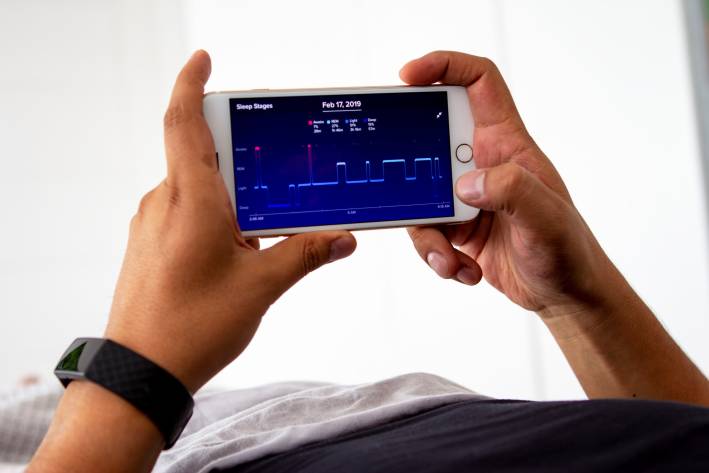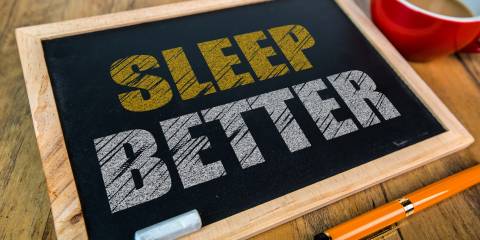If you have a FitBit or similar device, it can track your sleep and give you a report each morning. Even if you don’t have a Fitbit, there are many apps for smartphones that do the same thing. But how do you make sense of the peaks and valleys of that graph in your sleep report?
Here are some tips and benchmarks to help you make sense of it all.
Sleep Cycle Basics
There are two basic types of sleep: REM (which stands for rapid eye movement) and NREM (non-rapid eye movement). In a typical night, you should cycle between the two about every 90 minutes. In one night, you should go through three to six cycles.
Here’s where it gets a little tricky. Within that NREM sleep, there are three phases.
- N1 is that state between wakefulness and falling asleep. This is when you may feel sudden muscle movement and falling sensations.
- N2 is the onset of light sleep when your body temperature drops, breathing and heart rate become regular, and you disengage from your surroundings.
- N3 is also named “slow-wave sleep” for the slow delta waves the brain produces during this stage. N3 is the deepest and most restorative sleep. During this phase, your blood pressure drops, breathing slows, muscles relax, hormones release, and blood flow to the muscles increases for tissue growth and repair.
Together, these three stages should constitute about 75 percent of your night, beginning when you first start to fall asleep. The other 25 percent of your time asleep should be in REM sleep.
REM sleep provides energy to the brain to support your daytime activities, but this is also when your brain is active and dreaming. Your eyes dart back and forth under their lids and the body becomes immobile as the muscles “turn off” and relax.
It is during the first third of the night that you get the most slow-wave, or deep, sleep. Most REM sleep occurs in the final third of the night.
It is normal for healthy sleepers to wake up to 10 times each hour of sleep for very short, second-long periods. These are typically forgotten by morning, unless they last for a longer period, maybe a few minutes, or something unusual occurs.
About Each Sleep Cycle
Light sleep is when you process memories and emotions and your metabolism regulates itself. This is the maintenance phase of sleep.
Deep sleep, or N3, is all about the body. Your body uses the hormones released and increased blood flow to repair and rebuild on the cellular level. Deep sleep is directly related to sleep need; the longer you are awake, the more deep sleep you will need that night. This is also the rest that strengthens your immune system.
The brain is very active during REM sleep. REM sleep is integral for memory, cognition, and mood regulation. Your body, however, is effectively paralyzed.
So, How Does This Look on Your FitBit Report?
Light sleep will likely take up 50 to 60 percent of your night, though these numbers don’t really affect how you feel. It’s essentially just the time that isn’t spent in deep sleep or REM.
Deep sleep should be 10 to 25 percent of your night. The older you are, the less you need, but you can’t get too much.
REM sleep should be 20 to 25 percent of your night. Since most REM happens towards the end of the night, if you cut your sleep short or wake up too early, you’re losing out on REM.
Too much REM sleep can cause your brain to be overactivated and result in irritability or exacerbated symptoms of depression and anxiety. It’s not waking up on the wrong side of the bed so much as the wrong side of the REM!





